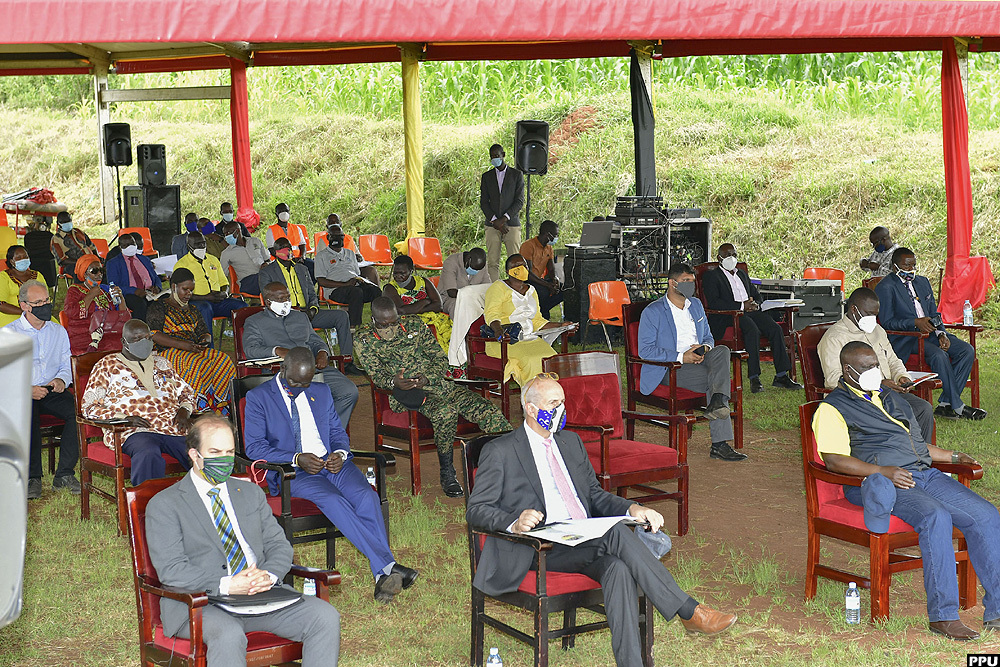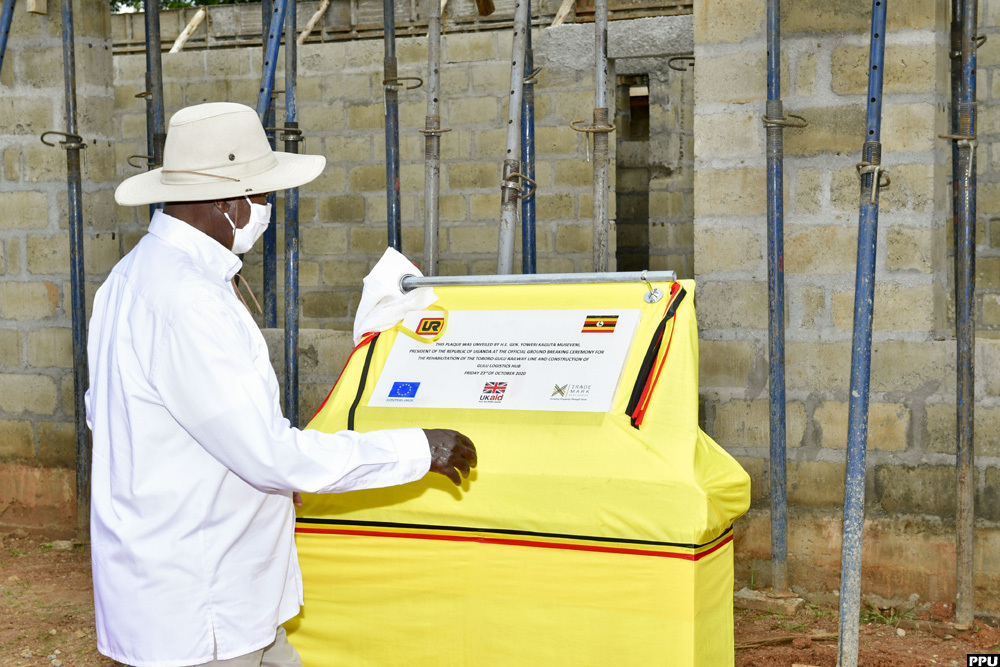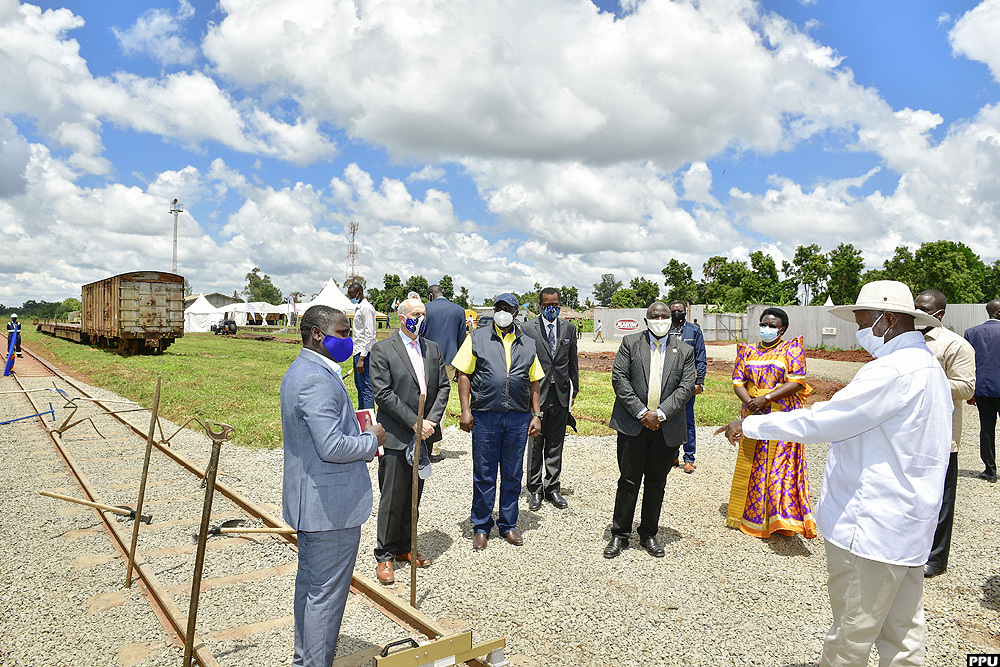Museveni says Gov't to prioritize railway, water transport
The President says that the train, which last reached its terminal in northern Uganda in August 1986, will be revived in a more concrete way.
INFRASTRUCTURE
GULU - President Yoweri Museveni commissioned rehabilitation works for the Tororo-Gulu Railway line and the construction of the Gulu logistics Hub in Gulu City on Saturday.
Speaking shortly after the ground-breaking ceremony, the President said that the collapse of Uganda railway network in the country like other sectors of government, including the army, was as a result of bad policies of the past regimes adopted from the colonial system.
"Once a pillar of the State like the army is built based on ideology, streamlined policy and in a clever way, sectarianism tendencies are eliminated and destroyed," he said.

The President said that the train, which last reached its terminal in northern Uganda in August 1986, will be revived in a more concrete way because Government considers it as a major infrastructure priority.
"Railway transport is cheaper than road transport. For example, the cost of transporting a 40 feet container of goods from Mombasa Port to Kampala is US$3600 (sh13.4m) compared to railway transportation, which is US$1800 (sh6.7m).
"It will be even much faster and cheaper once the Standard Gauge Railway is constructed," said Museveni.

The works and transport ministry, in partnership with the finance ministry and Uganda Railways Corporation, with support from the European Union (EU), is implementing a project for the rehabilitation of the 375km Tororo-Gulu metre gauge railway line.
The project is part of a bigger programme, the Development Initiative for Northern Uganda (DINU), which is co-funded by the Ugandan government of Uganda and the EU.
It is linked to the project for development of the Gulu Logistics Hub/Gulu Inland Container Depot, also funded by the EU and DFID through TradeMark East Africa.
The Tororo-Gulu railway will provide a link between the port of Mombasa and northern and eastern Uganda, as well as South Sudan and the Democratic Republic of Congo.
This support will go a long way in diverting cargo from road to rail, which is cheaper, more environmentally friendly because of less emission of green gases and ultimately saving roads from early failure and therefore saving the country the expense of maintaining roads.

President Museveni said that railway transport is safer because it saves on road network repairs caused by heavy trucks, adding that Government is also considering exploiting water transport on Lake Victoria between Kisumu in Kenya into Uganda ports of Kasensero-Bukakata that link to Rwanda and the DRC.
Works and transport minister Gen. Katumba Wamala said that for the rehabilitation of the Tororo-Gulu railway line, the EU has contributed Euros €21.5m (sh95b) while the Uganda government contributed sh113bn.
Sogea-Satom, together with NEC, will execute the rehabilitation works, with the project expected to be complete by February 2023.
Wamala said transport and logistics costs account for about 50% of the value of goods and services to Uganda.
Once complete, the railway line will benefit the community in northern Uganda, South Sudan and DRC and reduce the costs on the goods that are currently bonded in the warehouse in Kampala.
The EU ambassador to Uganda, Attilio Pacifici, underlined that the EU's total contribution of more than sh120b, equivalent to €27.6m, to the project is a grant to the Uganda government.

The Gulu Logistics Hub
The logistics hub is located on 24.1 acres owned by Uganda Railways Corporation and is located in Layibi division in Gulu City.
The hub is expected to reduce barriers to trade for both northern Uganda and the neighbouring countries of South Sudan and DRC.
It will serve the trade corridors of Kampala-Gulu-Elegu/Nimule-Juba Trade Corridor; and Gulu-Pakwach Goli/Pader/Lira/Vurra DRC Trade Corridor. The hub will be able to handle more than 200,000 containers per annum.